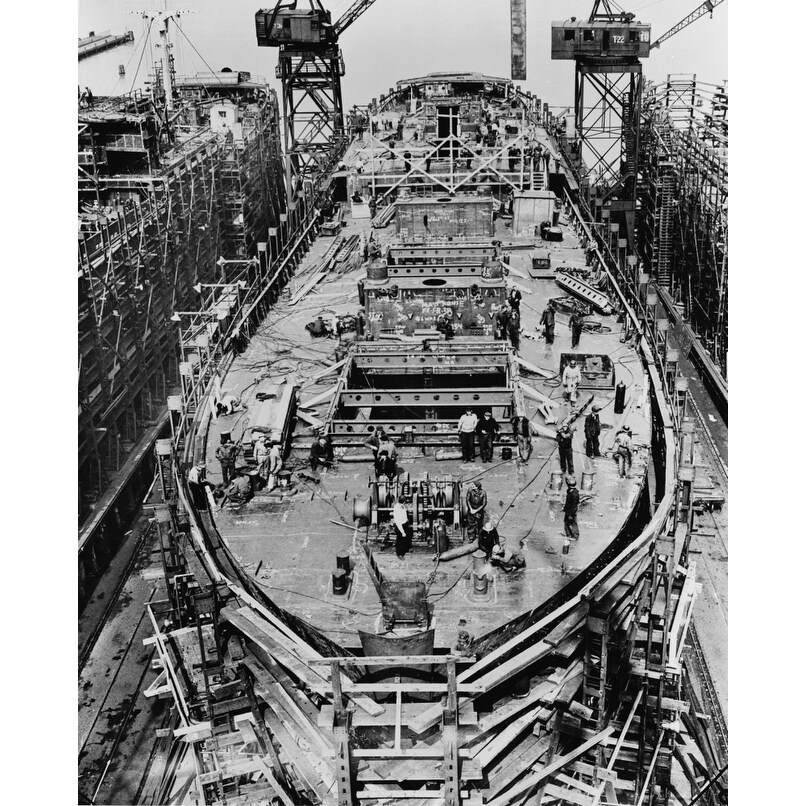
While the Liberty ships were designed to be the workhorse of the war, Victory ships could continue to be used after the war as part of the regular merchant fleet. These ships were designated Victory ships. The newer ships were bigger and faster with better engines. In 1943, the United States started a new emergency cargo ship program to replace the Liberty ships. Their design had a weakness in the hull that caused ships to sometimes break in two. Amidships on the boat deck, were four steel lifeboats each 24 ft long with a capacity of 25 persons. Each Liberty ship carried a crew of between 38 and 62 civilian merchant sailors, and 21 to 40 naval personnel to operate defensive guns and communications equipment. Later the figure was amended, increasing the ships crew to 52 and reducing the gun crews to 29.

The basic Liberty ship was originally intended to have a crew of 45, but this was later increased to include gun crews up to 36, making a crew total of 81. The crew quarters were located amidships (the middle portion of the ship). Later, most were equipped with a 3 inch/50 caliber gun at the bow, a 5 inch/38 caliber at the stern, and eight 20-mm guns - two forward, four on top of the midship house and two aft. Many Liberty Ships sailed without defensive weapons, especially at the beginning of the program. The,500 horsepower steam engine pushed them through the water at 11 knots (approximately 12.5 miles per hour). The absence of coal bunkers enabled a superstructure alteration - permitting the use of a single structure amidship (rather than two houses). Due to a shortage of diesel engines and turbines, the US production of which was designated for its own naval vessels - the Liberty Ships were commonly powered by triple-expansion reciprocating steam engines. Yet, the only significant alteration to the propulsion machinery was the installation of watertube oil-fired boilers to replace the original coal-burning firetube Scotch boilers. The engine and hull were developed from British designs - some elements of which were over 60 years old in 1941. There are 121,000 board feet of lumber in a Liberty ship and 72,000 square feet of plywood. A Liberty ship could carry an amount of cargo equal to four trains of 75 cars each. The cargo gear included 5-ton booms for each hold and a 50-ton boom at No. Each could carry 10,800 deadweight tons (the weight of cargo a ship can carry) or 4,380 net tons (the amount of space available for cargo and passengers). The standard Liberty ship had a gross tonnage about 7,176 and displacement tonnage 14,300. Liberty ships had five cargo holds, three forward of the engine room and two aft (in the rear portion of the ship). The standard Liberty Ship, categorized by the Maritime Commission as an EC2 ("Emergency Cargo") vessel measured between 400 and 450 feet in length, nearly 60 feet in breadth, drew close to 40 feet of water. The result was designated EC2-S-C1, and they were originally referred to as 'emergency ships.' Some alterations were made to conform to American manufacturing and shipbuilding standards, some to accommodate the scarcity of certain materials, and some to meet the need to build as rapidly and cheaply as possible. The US Maritime Commission made a number of alterations to the British "OCEAN" design.

Sixty British OCEANs were built in the US (30 each at Portland, Maine, and Richmond, California) with closed shelter deck finish, whereas most of the Canadian construction followed the open shelter deck details and were converted during service. The vessels were designated as OCEAN Class ships. The adaptation was from a wartime plan entitled, "The Northeast Coast, Open Shelter Deck Steamer," and generally known as "The North Sands 9300 Tonner." The scantlings allowed for an 18-inch increase in draft upon the closure of all tonnage openings and provided a closed shelter deck vessel of 10,100 deadweight tons. This style of vessel had been produced until the mid-1930s, the last one being the DORRINGTON COURT. Plans very similar to those which, reportedly, had been used to build tramp steamers at Newcastle-on-Tyne in 1879. Thompson & Sons yard in Sunderland, England. The original design was based on plans from the Joseph L.


 0 kommentar(er)
0 kommentar(er)
